Homeless Fish and Warming up Sunspots
This week, how increasing CO2 levels could stop fish from finding a home and new insight into how sunspots keep warm. We also discuss the recent E.Coli outbreak in Europe as well as discover the world's largest DNA computer!
In this episode
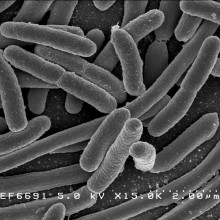
00:17 - A New and Fatal E.Coli Outbreak
A New and Fatal E.Coli Outbreak
Dave - Making very big headlines at the moment is an outbreak of a new strain of E. coli in northern Germany; it's thought to have stemmed from contaminated salad vegetables, including cucumbers. The infection is a more pathogenic form of the bacteria, causing haemolytic-uraemic syndrome (HUS), which damages the kidneys and nervous system and can be fatal. So far, about 2000 people in Europe have been infected, with at least 17 deaths. Chris- this is your field - could you tell us a bit more about what's happening?
Chris - Well first of all, we've probably never seen this form of E. coli before so it's almost certainly new. It's designated E. coli 0104 and this is just a system of numbers and letters that's used to refer to the biochemical markers which are on the surface of the bug, which is a convenient way of labelling it for want of a better term. It first cropped up in Germany late last month when it was linked to an outbreak of a form of gastroenteritis that was particularly characterised by people losing blood with the motions. So that first of all rang alarm bells and then when the numbers really began to climb, public health officials got involved and began to trace where this may have stemmed from and also, what the causative organism was and it turned out to be this form of E. coli. There's E. coli in the guts of pretty much everything on Earth, but some forms of E. coli tool themselves up genetically and they have this arsenal of molecular weapons that they can throw at us, and this particular strain appears to have some additional genes that enable it to produce a toxin that damages the kidneys, and can lead to blood cells breaking down and that's the haemolytic-uraemic syndrome bit of it. So, it's an unusual form of E. coli where it came from though it's still not entirely known.
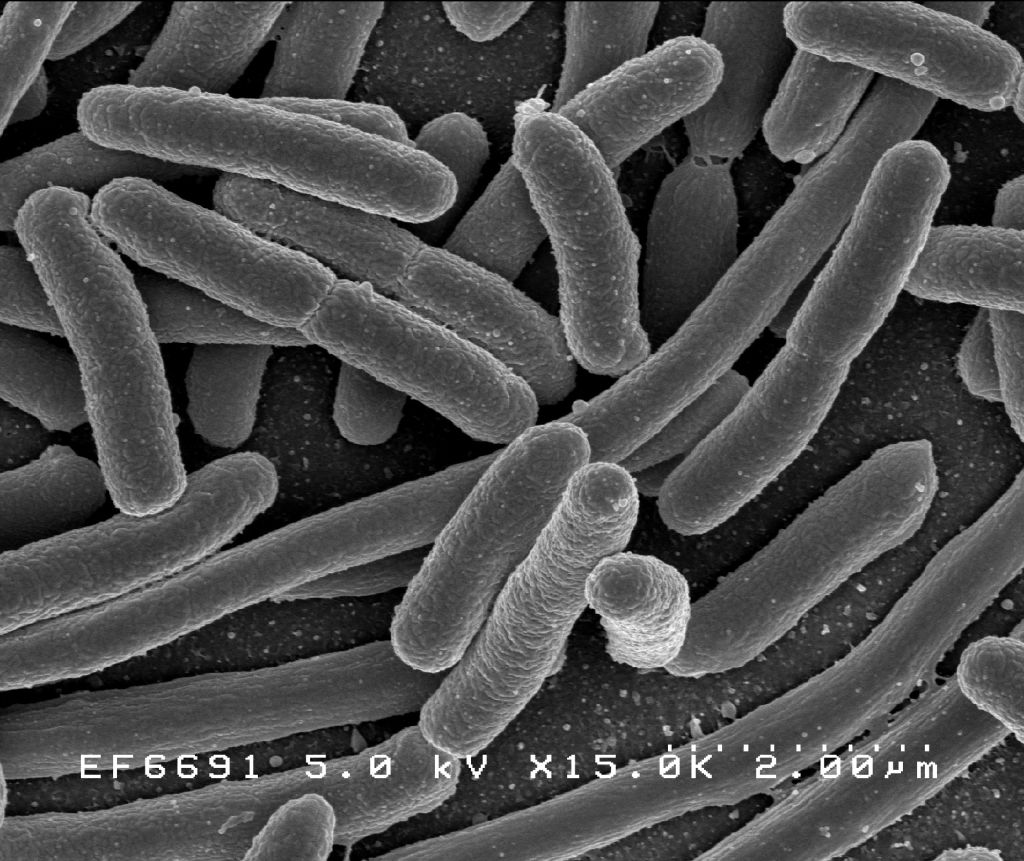 Dominic - You said this was an entirely new strain of E.coli. How could a new strain come about?
Dominic - You said this was an entirely new strain of E.coli. How could a new strain come about?
Chris - Well, the really clear answer to that comes from the secrets which lurk in its genome because you can unpick, in a sort of detective way, the origins of things by asking genetically who are your relatives? And so, what scientists have done is to send samples of this particular organism over to the Beijing Genomics Institute (BGI) which is one of the biggest genomics sequencing facilities in the world. They have picked their way through all 5.2 million genetic letters that make up this bug, and they've began to look at what the genetic sequence is and who - in terms of microbiologically who, this organism is related to. The interesting story that's emerged is about 93% of the genes are direct relatives from a form of E. coli which has been linked to causing diarrheal outbreaks in certain parts of Africa. But 7% of the genome has been linked to a form of E. coli which makes toxins and in particular, toxins called shiga toxins and these toxins are nasty. When the bug initially locks onto the wall of the intestine, it damages the wall of the intestine and then produces this toxin which oozes into the bloodstream. And the toxin has two parts to it - a subunit A and a subunit B - and the subunit A behaves a bit like a molecular grappling hook. It goes around in the bloodstream until it finds this structure which is on the kidney which it can bind to and it locks on, and this then helps the subunit B to crawl inside the cells where it disables the cell's ability to make proteins which are effectively the recipes that cells need to keep them alive. This causes the cells to die. This triggers inflammation. It also causes blood cells to begin to cling to the wall of the blood vessel and break down - that's the hemolysis bit - so you get a combination of kidney damage and blood cells breaking down, the hemolysis. In a small minority of people, this can be sufficiently severe that they unfortunately die which is what we've seen in this time. So it looks like it's a sort of mix and match between a form of the bug from overseas and some other forms of the bug which we know exist in nature.
Dave - It seems a very specific piece of evolution to actually attack our kidneys in this way. Is there any advantage to the bug? Killing its host seems like a really bad idea.
![Cucumber fruit developing on plants possessing multiple lateral branching, which is atypical of commercial cucumbers. This type of branching is important because increasing branch number increases yield potential. © Photo by Stephen Ausmus. [http://www.ars.usda.gov/is/graphics/photos/mar07/d730-30.htm Image Number D730-30] Cucumber fruit](/sites/default/files/media/ARS_cucumber.jpg) Chris - Well it's not universally fatal as you can see. We think about 2,000 people have been infected with this new strain of E. coli since the outbreak began and interestingly, the outbreak we think now, there's some evidence emerged this evening, researchers are tying this to a festival that happened early in May - 6th, 7th of May in the Port of Hamburg. They think that perhaps the mass gathering of people there, eating some kind of contaminated food stuff - probably salad vegetables, may have spawned the outbreak. The reason that this bug is able to do this is that humans aren't the natural host of these organisms that cause this particular syndrome. In fact, they probably come from farm animals. Farm animals don't have the molecular target for the toxin that we do so they can carry these things perfectly harmlessly to them, and it comes out in their manure. If you use that manure to fertilise your food crops, your salad vegetables, your tomatoes, and whatever to make them grow very well, the bugs that are carried can then get into the food. One of the other things that stemmed from this piece of research being done in Beijing is that apart from being to make the toxins, this particular form of E. coli also has some genes that make it stick better to the cells of the intestine and possibly also to the cells in things like lettuce and tomatoes. In other words, to survive better on those environments. Because salad items aren't really cooked or boiled, usually raw, and as you peel the thing and peel the bug off the surface, then it's probably on the surface even in tiny numbers, and a small dose is an infectious does with this particular organism.
Chris - Well it's not universally fatal as you can see. We think about 2,000 people have been infected with this new strain of E. coli since the outbreak began and interestingly, the outbreak we think now, there's some evidence emerged this evening, researchers are tying this to a festival that happened early in May - 6th, 7th of May in the Port of Hamburg. They think that perhaps the mass gathering of people there, eating some kind of contaminated food stuff - probably salad vegetables, may have spawned the outbreak. The reason that this bug is able to do this is that humans aren't the natural host of these organisms that cause this particular syndrome. In fact, they probably come from farm animals. Farm animals don't have the molecular target for the toxin that we do so they can carry these things perfectly harmlessly to them, and it comes out in their manure. If you use that manure to fertilise your food crops, your salad vegetables, your tomatoes, and whatever to make them grow very well, the bugs that are carried can then get into the food. One of the other things that stemmed from this piece of research being done in Beijing is that apart from being to make the toxins, this particular form of E. coli also has some genes that make it stick better to the cells of the intestine and possibly also to the cells in things like lettuce and tomatoes. In other words, to survive better on those environments. Because salad items aren't really cooked or boiled, usually raw, and as you peel the thing and peel the bug off the surface, then it's probably on the surface even in tiny numbers, and a small dose is an infectious does with this particular organism.
Chris, Dave and Dominic continued their discussion off air...
Dave - So I guess this leaves on to the question which a lot of people have at home is - is there anything you can do to protect yourself? Is it likely to be a major problem?
Chris - Well we're probably seeing two phenomena at the moment. The 2,000 or so people who have manifested it so far may either have been infected at the time the outbreak occurred - that will probably account for the bulk of them, and then there will also be some people who may have caught it from other people who've got it because the incubation period appears to be between 1 and 10 days. So, people who were getting it may have got it and had a short incubation period, having got it off someone who has already got it, or they may just be a slow incubator, having had a smaller infectious dose, for instance, at the source. At the moment, although it's spread to a number of countries in Europe in terms of numbers, all of those numbers appear to be connected to this particular geographical site in Germany. So we think that's the source and we haven't seen onward spread - certainly not in the UK. We haven't seen onward spread across Europe elsewhere, so it looks like it's being contained. But obviously, this means people are going to have to be very vigilant and if people do get these kind of symptoms then they should go and seek help and also make sure that they are very careful with hygiene because it's a small infectious dose and it can spread on surfaces and things like that.
Dominic - So would the bug be just on the surface of the vegetable or would it be spread through the whole flesh?
Chris - I guess what you're asking is, peel it, boil it, or leave it - does this apply here? The answer is that when the vegetables grow, the bugs can get onto the surface of the vegetable, and obviously, if we don't wash them properly then you could pick something up. This is a frequent cause of travellers' diarrhoea when you visit third world countries. People just eat things that haven't been washed properly. But in certain circumstances, if there are small nooks and crannies on the surface of the vegetable, then the bugs can go into those. In certain cases, the plant can then overgrow the bug, almost trapping the bacterium inside the plant's flesh and protecting it like a miniature capsule. So that even if you do peel it, sometimes it's so deep into the flesh, you may not remove at all. So, the answer is, probably, if you are thinking about being safe at the moment, you'd probably be wise to not consume vegetables brought from German markets in Hamburg. As far as we know, there's no risk to people in this country at the moment and as I say, the numbers are not climbing dramatically anymore. So we think it's probably okay.
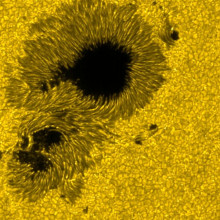
05:47 - How Sunspots Keep Warm
How Sunspots Keep Warm
A group of Scandinavian researchers led by Göran Scharmer of Stockholm University have uncovered some clues about how sunspots stay warm.
Sunspots appear as dark blotches on the Sun's surface, and they represent spots where the Sun's surface is slightly cooler than elsewhere. Most of the Sun's surface is heated by convection currents which carry heat from the solar core, where nuclear fusion reactions that convert hydrogen into helium provide the energy that keeps the sun shining, up to the photosphere that we see. Sunspots form when the Sun's strong magnetic field is orientated to oppose these convection currents, causing the photosphere to quickly cool down, because there's nothing to replenish the energy that it's radiating away. Typically, it drops from its normal temperature of around 6000°C down to around 3000-4500°C.

' alt='Granules-like structure of surface of sun and sunspots.' >But even at 3000°C, sunspots glow red hot, and without some heat source to replenish the energy that is radiated away, we would expect them to cool further. So why don't they? Writing in the journal Science, Scharmer and his colleagues present evidence that sunspots aren't regions where convection is completely turned off, but rather regions where it's severely weakened, so that some energy from the Sun's depths can still rise through to the surface.
Convection is normally recognised by the characteristic patterns of rising and sinking currents that it creates on the surface of the Sun, called convection cells. You can create a similar effect by looking at the pattern created in a pan of boiling water when you pour peas into it. But sunspots don't show these patterns, which is why they've long been thought to be entirely free of convection.
Scharmer used a different technique, effectively managing to look beneath the Sun's surface by observing it at a very specific wavelength, corresponding to a spectral line of neutral carbon which is only produced by material at temperatures of tens of thousands of °C. The Sun's surface is too cool to produce this spectral line, and so if you see it, it must be coming from deep beneath the surface.
Scharmer not only managed to detect this neutral carbon line at the edge of a sunspot, but also found that it had a blueshift, indicating that it was moving towards us, rising up through the Sun, at a speed of nearly a kilometre per second. That's the first evidence that has ever been found that there is still some weak convection going on beneath the surface of sunspots.
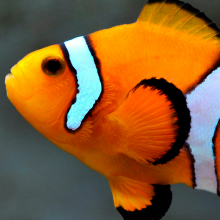
09:28 - Losing Nemo - How Acid Oceans Deafen Fish
Losing Nemo - How Acid Oceans Deafen Fish
Dr Steve Simpson, Bristol University
Chris - It is a proven fact that if you elevate the amount of CO2, carbon dioxide, in the atmosphere (which we also think is linked to climate change) this will have the effect of acidifying the sea, because carbon dioxide when it dissolves forms carbonic acid. This acidification, it turns out, can change the way that fish react to the world around them. Dr Steve Simpson, who's from Bristol University, has been looking at how this affects their ability to sense the sound of danger...
Steve - My research over the last decade has focused on the behaviour that coral reef fish show when they're looking to seek habitat after a period of a few days of developing out at sea in the plankton. So these are very young coral reef fish, seeking the habitat that they'll spend the rest of their lives on. My interest has been particularly on the importance of auditory cues. So this is sounds produced by animals on the coral reef that the small larvae can detect and move towards and use to pick specific habitats. Recent research that's been coming out over the last couple of years has demonstrated that fish that experience ocean acidification lose their natural sense of smell which is the other cue that fish use to detect reef habitat. So the question that I was interested in testing is whether the sense of hearing is unaffected by ocean acidification and so, would be able to compensate for this loss of sense of smell, or whether hearing is also impacted on by ocean acidification.
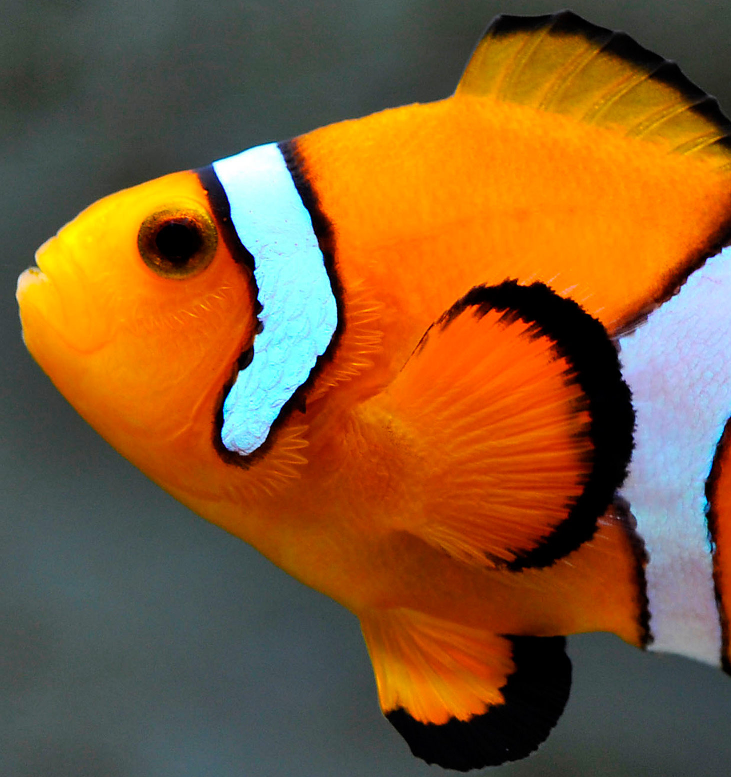 Chris - So what was the experimental technique? What did you actually do and what fish did you test?
Chris - So what was the experimental technique? What did you actually do and what fish did you test?
Steve - We worked with clown fish. Clown fish are similar to Nemo, and are readily available through the aquarium trade. They can be bred in captivity. So for scientists, this is great because it means that we can actually work with the embryos and larval stages of these fish. So we took embryonic clown fish and as soon as they hatched, we put them into different treatments of water that were either based on today's CO2 environment, we bubbled air into their tanks, or based on different predictions, for the CO2 environments later in the century. So we had three treatments where we bubbled in what we're expecting the atmosphere to be like in 2050 and then two different scenarios for 2100 and these are based on scenarios from the IPCC, the Intergovernmental Panel on Climate Change. So we reared our fish through the larval stage in these different CO2 environments and then we took the fish and put them into an auditory choice chamber which was in the lab - so it was a long tube facing towards a speaker and we allowed the fish to move around in this choice chamber while we played sounds to them and we monitored their behaviour.
Chris - What, first of all, would a normal fish or young fish do under those circumstances when played the sounds of a reef in the way you did?
Steve - We were running our experiments in the daytime. We used a recording of daytime coral reef noise and we know from both studies following fish out in the open water or from playback experiments that we've ran in the past, fish naturally move away from this sound. A coral reef is a dangerous place to encounter for the first time during the daytime because of the high density of predators. And so, the noise of all these predators cause fish naturally to move away from the sound.
Chris - And what about when you then substituted fish that had been reared in these enhanced CO2 environments? What did they do?
Steve - So the fish that had experienced high levels or elevated levels of CO2 showed no response to the recordings. So were equally spending time towards the speaker as well as away from them.
Chris - Gosh! So that's quite striking, isn't it? Have you any clue as to why they behave like that? How do you know that these fish haven't gone deaf?
Steve - So it's certainly possible that the fish have gone deaf. There are several potential mechanisms as to what's happened here. It may be that hearing has been lost, although we did look at the growth of their ear bone which is a central part of a fish ear and we found there are differences in the shape or the size of the ear bone between the fish from different treatments. But it's still possible that hearing has been impacted on. If it's not hearing that's been impacted, it may then be neural transmission or the processing of information and the impact could be occurring there, or it may be that the fish can hear these sounds but loses its natural avoidance behaviour. Either way, I mean, any of those three scenarios would be bad news for the fish in the natural environment.
Chris - Indeed, but one area where your experiment doesn't really reflect the natural environment is that you took the embryos from a normal situation and then put them into these enhanced CO2 situations for the remainder of their development until you tested them. So that could in itself be quite stressful, so could it just be the fish are responding in a stress related way and that in fact, if you were to study their progeny, if you reared fish from embryo to adult and bred from them and then took the progeny and tested them, you might see they were less stressed and therefore, less affected in this way.
Steve - Yes, so that's a very important question to ask as to whether it is due to an acute response to CO2 environments or whether the fish through generations have the ability to adapt. That will determine how we think, how we can predict the responses of fish will be over the next century. What we're seeing is an unprecedented rate of change of the pH of the sea, so it's occurring 100 times faster than any time in the last 650,000 years. And so, we're expecting that fish, if they can adapt, will be doing this in a period of only a few tens of generations through that century. And that really is a focus of the lab of my collaborator Professor Phillip Munday who is now working with multiple generations to look at the rate of ability to adapt.
Chris - And what do you think the implications are for what you've found?
Steve - Well the implications are that fish losing their sense of hearing or their natural responses to sound are detrimental certainly to fish, in that fish live in a very auditory world, so this sound to communicate, to detect and avoid predators, to find their own shoal mates, and also to detect potential prey items. So there would be fairly detrimental impacts on fish populations. We don't know whether this impact would be seen across the board in terms of different fish species and that's the focus of our research now, to start to look at the variability of response between species. I think also an interesting question is how variable is the response within a species, because it may be that every fish needs to adapt, or that there are some rare fish that already have more tolerance that would then have that ability through selective sweeps in the population to be able to keep pace with the change.
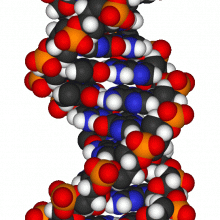
16:49 - Largest ever DNA computer
Largest ever DNA computer
The overwhelming majority of the computing done today is with transistors in silicon chips, though there are a few other tacks which are being tried. One is using DNA, it can famously encode information, and it is a chemical, so in reactions it can do operations on this data.
In the long run they have been proposed as a way of solving some problems which are very slow to do with a normal computer because although a DNA computer does calculations slowly, DNA molecules are quite small, so it could do a lot of them at the same time, but we haven't quite reached this point yet.
Erik Winfree and Lulu Qian have built a system of DNA molecules that interact with one another, in lots of different reactions. DNA is a double helix, two spiral molecules, relatively weakly bonded to one another. Two DNA molecules can only connect to one another though when they have corresponding codes, and if only half of the code corresponds to one another only half of the molecules will connect, leaving the other half able to make another reaction.
By encoding inputs as the presence or absense of a molecule, a pair of these reactions can give outputs of another molecule, and behave like any conventional logic gates. Computers are made of logic gates so with enough reactions you can build a computer.
So far they have built a system of 130 DNA molecules which can do a calculation... they can find the closest integer to the sqare root of a number up to 16, and the reaction takes about 10 hours.
This, in itself, isn't very useful, but they have built all the infrastructure to be able to make more complicated systems, and read out the results.
The 10 hour calculation time means that it isn't going to be competing with silicon any time soon, but there are places where being able to do simple logic chemically could be useful, for example in a diagnostic test you might want to look for the presence of 3 different pieces of DNA only producing a result if you see them all, or you could only release a reactant only when the first 2 stages of a reaction had completed.
They are also suggesting that life is a complex system of interacting chemical reactions, so we may be able to learn something about it by studying these simple DNA computers.

19:54 - How You Use Your Handset
How You Use Your Handset
Daniel Wagner, Cambridge University
Chris - Computer scientists at Cambridge University have come up with a way to make mobile phones work more intuitively in the future. With us to explain what they're actually doing is Daniel Wagner. He's one of the team behind the work. Hello, Daniel.
Daniel - Hello.
Chris - He's actually here in person to tell us about it. So, what is the problem first of all that you've been trying to solve? What's the challenge?
Daniel - We've been trying to figure out what people do with their smartphones because if you want to make better phones then you need to know what people do with them now.
 Chris - Don't we already know that then?
Chris - Don't we already know that then?
Daniel - Well this is not really well-known because handset manufactures may be conducting studies, but they don't publish this data. And also, usually these studies are relatively small scale. Mobile operators know what calls you make, but they don't know what happens offline and so for example, which apps you use or when you charge your phone. So what we could do for example, if the phone is charged for short amounts of time, every couple of hours for example, then we could have a battery that charges quickly and maybe for example take a long time to charge fully, but it would still work if we have this kind of pattern present.
Chris - I get it. so, that's the challenge, that's the problem. How have you set out to solve it?
Daniel - Right. So we created an application for Android Smartphones and it's called Device Analyzer. It runs in the background while you use your phone, and it collects statistics of what you do.
Chris - Okay, so what's it monitoring? How is it doing that?
Daniel - It is basically monitoring anything you could think of. So when you charge your phone for example or when you open an application. So we can get some really interesting data from this. So for example, assume that you're in a meeting and your phone rings. So what you do is you're going to turn the phone off, you're going to reject the call and put it to silent, and then from this, we can infer that the phone wasn't supposed to ring in the first place, and this is some data that no one else could possibly get because they either only have your phone records, or they know what you did offline.
Chris - So you collect all these data, it goes into a central database at the university where you mass thousands of call informations from phones together. What are you going to do with this information?
Daniel - So first, before we upload, what's important is that we strip personally identifying information from this so that the people can give us for example a record that a phone call has happened, but we don't necessarily know who was called, so that's important for the people to know. And then we can do aggregate analysis on this dataset and find out patterns that only emerge when you look at a big amount of people.
Chris - And you're going to release this in the public domain are you?
Daniel - Yes this is true. So we give people three months to take a look at all the data that we collect about them and if they're happy with this and give us their consent, then we'll release it into the public domain and give it to other researchers.
Chris - How do people have a go if they want to have a go at the application to participate and help you with the research?
Daniel - The application is available for download on the Android marketplace right now. It works on any android phone and you can just download and it will sit quietly in the background.
Chris - And if you'd like to help Daniel in his research, we've also made it easy for you to get hold of a copy of it. if you go to
thenakedscientists.com/analyser then it will take you to a download option and you can get hold of a copy of that android app and it will then begin to spot what you do on your phone in an anonymous way and help Daniel with his research. Maybe you'll come back and give us an update later on what you find. When do you think you'll have enough numbers to be able to tell us what you're seeing?
Daniel - I think within a couple of months, we shall have plenty of data.









Comments
Add a comment